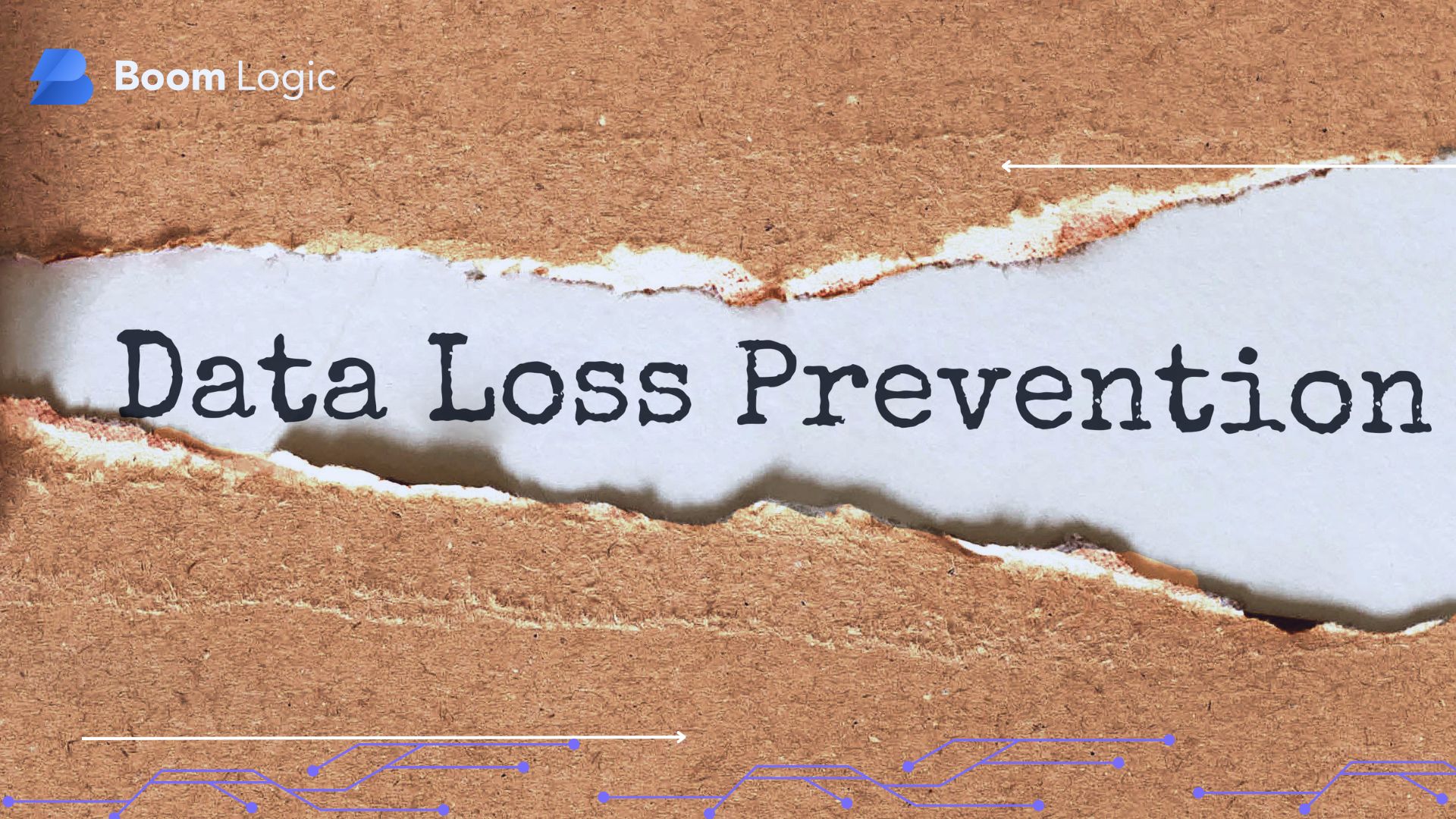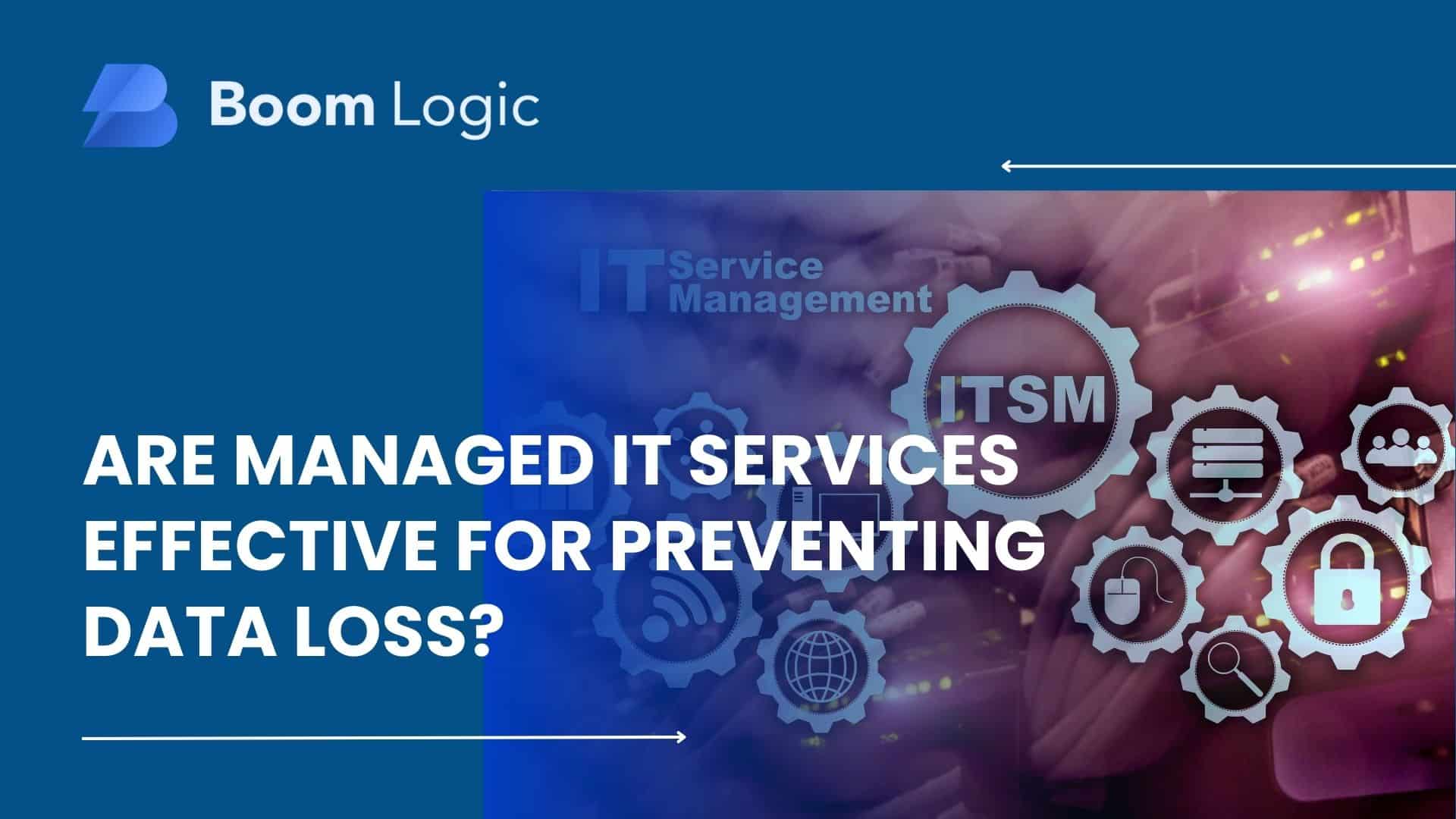Data loss represents one of the most catastrophic events that can befall any organization, potentially resulting in operational paralysis, financial devastation, and irreparable damage to business reputation. In today’s digital landscape, where businesses generate and rely on vast amounts of critical information daily, the question of whether managed IT services are effective for preventing data loss has become increasingly vital for decision-makers across industries.
The statistics surrounding data loss paint a sobering picture of the risks facing modern businesses. Research indicates that 93% of companies that experience significant data loss without adequate recovery measures cease operations within one year. Furthermore, the average cost of data loss incidents has skyrocketed, with organizations facing expenses ranging from hundreds of thousands to millions of dollars when accounting for recovery efforts, lost productivity, regulatory fines, and customer attrition.
Managed IT services have emerged as a comprehensive solution to address these mounting concerns, offering specialized expertise, advanced technologies, and proactive strategies designed to safeguard business-critical information. These services encompass a wide range of data protection methodologies, from automated backup systems and disaster recovery planning to real-time monitoring and threat detection capabilities.
The effectiveness of managed IT services in preventing data loss stems from their ability to implement multi-layered protection strategies that address various threat vectors simultaneously. Unlike traditional in-house IT approaches that often rely on reactive measures, managed service providers deploy sophisticated prevention mechanisms that identify and neutralize potential risks before they can compromise valuable data assets.
Understanding the relationship between managed IT services and data loss prevention requires examining the comprehensive nature of modern threats, the technological solutions available, and the strategic advantages that professional management brings to data protection initiatives. This analysis reveals why organizations increasingly turn to managed service providers to secure their most valuable digital assets and ensure business continuity in an environment where data threats continue to evolve rapidly.
Key Takeaways
For additional context, see this comprehensive guide.
- Proactive Protection Approach: Managed IT services excel at preventing data loss through proactive monitoring, threat detection, and automated response systems that identify and address potential risks before they can compromise critical business information.
- Multi-Layered Security Framework: Effective data loss prevention requires comprehensive strategies that include automated backups, disaster recovery planning, cybersecurity measures, and real-time monitoring capabilities working in concert to protect against various threat vectors.
- Specialized Expertise and Resources: Professional managed service providers bring dedicated expertise, advanced technologies, and 24/7 monitoring capabilities that most organizations cannot maintain cost-effectively with internal resources alone.
- Regulatory Compliance Assurance: Managed IT services help organizations meet industry-specific data protection requirements and regulatory standards, reducing legal risks and ensuring proper handling of sensitive information across different sectors.
- Business Continuity Focus: Beyond preventing data loss, managed services ensure rapid recovery capabilities and minimal downtime when incidents occur, maintaining operational efficiency and protecting revenue streams during critical situations.
- Cost-Effective Risk Management: The investment in managed IT services typically represents a fraction of the potential costs associated with data loss incidents, making professional data protection services a financially sound business decision for organizations of all sizes.
Understanding Data Loss Prevention in Modern Business Environments

For additional context, see detailed information on this topic.
Data loss prevention encompasses far more than simple backup procedures, representing a comprehensive approach to protecting organizational information assets from various threats and vulnerabilities. In contemporary business environments, data exists in multiple formats and locations, creating complex protection challenges that require sophisticated solutions and expert management to address effectively.
The modern threat landscape includes numerous vectors through which data loss can occur, ranging from cyberattacks and malware infections to hardware failures, human error, and natural disasters. Each of these threat categories requires specific prevention strategies and response protocols to ensure comprehensive protection. Managed IT services address these diverse risks through integrated approaches that combine technological solutions with expert oversight and strategic planning.
Cybersecurity threats represent perhaps the most dynamic and challenging aspect of data loss prevention, with attackers continuously developing new methods to compromise business systems and steal valuable information. Ransomware attacks, in particular, have become increasingly sophisticated, often targeting backup systems and recovery mechanisms to maximize damage and increase the likelihood of ransom payments. Professional managed services deploy advanced threat detection systems, behavioral analysis tools, and real-time response capabilities to identify and neutralize these evolving threats.
Hardware failures and system malfunctions constitute another significant category of data loss risks that managed IT services address through proactive monitoring and preventive maintenance strategies. By continuously monitoring system health, performance metrics, and failure indicators, managed service providers can identify potential hardware issues before they result in data loss, enabling timely replacements and repairs that maintain data integrity and system availability.
Comprehensive Backup and Recovery Strategies

For additional context, see our in-depth resource.
Effective data loss prevention begins with robust backup and recovery strategies that ensure business-critical information remains accessible even when primary systems experience failures or compromises. Managed IT services implement sophisticated backup architectures that go far beyond simple file copying, incorporating automated scheduling, version control, integrity verification, and geographically distributed storage to create comprehensive protection frameworks.
The 3-2-1 backup rule serves as a foundational principle in professional data protection strategies, requiring organizations to maintain at least three copies of critical data, stored on two different media types, with one copy maintained off-site. Managed service providers enhance this basic framework through additional layers of protection, including real-time replication, incremental backup optimization, and cloud-based storage integration that provides virtually unlimited scalability and geographic distribution.
Modern backup technologies employed by managed IT services include continuous data protection systems that capture changes in real-time, ensuring minimal data loss even in the event of sudden system failures. These systems work alongside traditional scheduled backups to create comprehensive protection that accommodates different recovery requirements and business continuity objectives. The integration of artificial intelligence and machine learning technologies further enhances backup effectiveness by optimizing storage utilization, predicting potential failures, and automating recovery processes.
Recovery testing represents a critical component of effective backup strategies that many organizations overlook when managing data protection internally. Managed service providers conduct regular recovery drills and verification procedures to ensure that backup systems function correctly and that recovery processes meet established time objectives. This proactive testing approach identifies potential issues before they impact actual recovery scenarios, maintaining confidence in data protection capabilities and ensuring business continuity when disasters occur.
Cloud integration has revolutionized backup and recovery capabilities, enabling managed service providers to offer scalable, cost-effective protection solutions that adapt to changing business requirements. By leveraging relationships with leading cloud platforms and understanding the nuances of infrastructure ownership versus reseller arrangements, professional managed services can design backup architectures that optimize performance, security, and cost-effectiveness while maintaining complete control over data protection processes.
Proactive Monitoring and Threat Detection

Proactive monitoring forms the cornerstone of effective data loss prevention, enabling managed IT services to identify and address potential threats before they can compromise business-critical information. This continuous oversight approach leverages advanced monitoring tools, artificial intelligence, and expert analysis to maintain constant vigilance over organizational IT infrastructure and data assets.
Real-time monitoring systems deployed by managed service providers track numerous indicators across network traffic, system performance, user behavior, and security events to create comprehensive visibility into organizational IT environments. These monitoring capabilities extend beyond simple alert generation, incorporating behavioral analysis and pattern recognition to identify subtle indicators of potential threats that might escape traditional security measures.
Network traffic analysis represents a particularly powerful component of proactive monitoring, enabling managed service providers to detect unusual data flows, unauthorized access attempts, and potential data exfiltration activities. By establishing baseline patterns for normal network behavior, monitoring systems can quickly identify deviations that may indicate security breaches or system compromises, triggering immediate investigation and response procedures.
User behavior analytics add another layer of protection by monitoring how employees and authorized users interact with organizational systems and data. These systems can detect compromised credentials, insider threats, and accidental data exposure risks by identifying unusual access patterns, excessive data downloads, or attempts to access unauthorized resources. This capability proves particularly valuable in preventing data loss incidents that originate from within the organization.
The integration of threat intelligence feeds enhances monitoring effectiveness by providing real-time information about emerging threats, attack patterns, and vulnerability disclosures. Managed service providers leverage these intelligence sources to update monitoring rules, adjust detection algorithms, and implement preventive measures before new threats can impact client environments. This approach ensures that data protection measures remain current and effective against evolving threat landscapes.
Automated response capabilities complement monitoring systems by enabling immediate action when potential threats are detected. These automated responses can include isolating affected systems, blocking suspicious network traffic, initiating emergency backup procedures, and alerting security personnel for further investigation. The speed of automated responses often proves crucial in preventing minor security incidents from escalating into major data loss events.
Regulatory Compliance and Industry-Specific Requirements
Regulatory compliance represents a critical aspect of data loss prevention that managed IT services address through specialized expertise and comprehensive understanding of industry-specific requirements. Different sectors face varying regulatory frameworks that mandate specific data protection measures, and failure to comply with these requirements can result in significant financial penalties, legal liability, and reputational damage beyond the immediate costs of data loss incidents.
Healthcare organizations must navigate HIPAA regulations that require stringent protection of patient health information, including specific requirements for data encryption, access controls, audit trails, and breach notification procedures. Managed IT services specializing in healthcare compliance understand these complex requirements and implement comprehensive protection strategies that ensure patient data remains secure while enabling efficient healthcare delivery. Organizations seeking specialized healthcare compliance expertise benefit from providers who understand both the technical and regulatory aspects of medical data protection.
Financial services organizations face equally demanding requirements under regulations such as SOX, PCI DSS, and various banking regulations that mandate specific data protection measures for customer financial information. These regulations often require detailed audit trails, segregation of duties, regular security assessments, and specific incident response procedures that managed service providers can implement and maintain more effectively than most internal IT teams.
The implementation of comprehensive audit trails and documentation represents a crucial component of regulatory compliance that managed IT services handle through automated logging, monitoring, and reporting systems. These systems capture detailed information about data access, modifications, and transfers, creating the documentation necessary to demonstrate compliance during regulatory audits and investigations.
Data classification and handling procedures form another essential element of regulatory compliance that managed service providers implement through policy development, technical controls, and staff training. These procedures ensure that different types of sensitive information receive appropriate protection levels and that employees understand their responsibilities for maintaining data security and regulatory compliance.
Regular compliance assessments and updates ensure that data protection measures remain current with evolving regulatory requirements and industry best practices. Managed service providers maintain expertise in regulatory changes and can quickly implement necessary updates to maintain compliance without disrupting business operations or compromising data protection effectiveness.
Technology Integration and Infrastructure Optimization
Effective data loss prevention requires seamless integration of multiple technologies and optimization of underlying infrastructure to create comprehensive protection frameworks that address diverse threats while maintaining operational efficiency. Managed IT services excel in this area by bringing specialized expertise in technology integration and the ability to design cohesive systems that work together effectively.
The integration of security technologies, backup systems, monitoring tools, and recovery mechanisms requires careful planning and expert implementation to ensure that these components complement rather than conflict with each other. Managed service providers understand the complexities of technology integration and can design architectures that maximize protection effectiveness while minimizing complexity and maintenance requirements.
Infrastructure optimization plays a crucial role in data loss prevention by ensuring that underlying systems have sufficient capacity, redundancy, and performance capabilities to support comprehensive protection measures. This optimization includes network bandwidth management, storage capacity planning, server performance tuning, and disaster recovery site preparation that creates robust foundations for data protection initiatives.
The advantages of working with providers who maintain comprehensive in-house capabilities become particularly evident in data loss prevention scenarios, where coordination between different technology components proves critical for effective protection. Single-provider solutions eliminate potential coordination issues and ensure that all protection components work together seamlessly.
Virtualization and cloud technologies offer significant advantages for data loss prevention by enabling rapid system recovery, geographic distribution of resources, and scalable protection capabilities. Managed service providers leverage these technologies to create flexible, resilient infrastructures that can adapt to changing business requirements while maintaining comprehensive data protection.
Performance optimization ensures that data protection measures do not negatively impact business operations or user productivity. Managed service providers balance protection requirements with performance needs through careful system design, efficient backup scheduling, and optimization of security processes that maintain comprehensive protection without creating operational bottlenecks.
The elimination of third-party dependencies in critical data protection components provides additional advantages in terms of control, responsiveness, and reliability. Organizations benefit when their managed service provider can maintain direct control over essential protection systems rather than relying on external vendors for critical data protection functions.
Business Continuity and Disaster Recovery Planning
Business continuity planning represents the strategic framework that ensures organizations can maintain essential operations even when data loss incidents or other disasters occur. Managed IT services approach business continuity through comprehensive planning that addresses not only data recovery but also system restoration, communication protocols, and operational procedures that enable rapid return to normal business functions.
Disaster recovery planning forms a critical component of business continuity that focuses specifically on restoring IT systems and data access following various types of incidents. Managed service providers develop detailed recovery procedures that specify recovery time objectives, recovery point objectives, and step-by-step processes for restoring different types of systems and data. These plans undergo regular testing and updates to ensure effectiveness when actual disasters occur.
The development of alternative operational procedures enables organizations to continue essential business functions even when primary systems remain unavailable during recovery processes. Managed service providers work with clients to identify critical business processes, develop alternative workflows, and implement temporary systems that maintain operational capability during extended recovery periods.
Communication planning ensures that all stakeholders receive timely, accurate information about incident status, recovery progress, and expected timelines for full system restoration. Managed service providers establish communication protocols that include internal notifications, customer communications, vendor coordination, and regulatory reporting requirements that may apply during data loss incidents.
Geographic distribution of resources and recovery capabilities provides additional resilience against regional disasters that could impact primary business locations and local recovery resources. Managed service providers leverage multiple data centers, cloud regions, and recovery sites to ensure that critical systems and data remain accessible even when primary locations become unavailable.
Regular testing and validation of business continuity plans ensures that recovery procedures remain effective and that staff members understand their roles during actual incidents. Managed service providers conduct tabletop exercises, partial recovery tests, and full disaster recovery drills that validate plan effectiveness and identify areas for improvement before real disasters occur.
Boom Logic: Comprehensive Data Protection Excellence
Boom Logic represents the pinnacle of managed IT service excellence in data loss prevention, combining advanced technologies, specialized expertise, and comprehensive service delivery to create unparalleled protection for business-critical information. Our approach to data loss prevention encompasses every aspect of modern data protection, from proactive threat detection and automated backup systems to comprehensive disaster recovery planning and regulatory compliance assurance.
Our data protection strategies leverage cutting-edge technologies and proven methodologies to create multi-layered defense systems that address the full spectrum of data loss risks facing modern organizations. By maintaining direct control over critical infrastructure components and eliminating unnecessary third-party dependencies, Boom Logic ensures rapid response capabilities and consistent service delivery that exceeds client expectations for data protection effectiveness.
The integration of advanced monitoring systems, artificial intelligence-driven threat detection, and automated response capabilities enables Boom Logic to identify and neutralize potential data loss threats before they can impact client operations. Our 24/7 monitoring and support capabilities ensure that data protection measures remain effective around the clock, providing peace of mind and operational confidence for organizations that depend on continuous data availability.
Boom Logic’s commitment to regulatory compliance and industry best practices ensures that client data protection measures meet or exceed all applicable requirements while adapting to evolving regulatory landscapes. Our expertise spans multiple industries and regulatory frameworks, enabling us to provide specialized protection strategies that address unique compliance requirements without compromising operational efficiency or data accessibility.
Frequently Asked Questions
How quickly can managed IT services detect and respond to potential data loss threats?
Modern managed IT services typically detect potential threats within minutes through advanced monitoring systems and automated analysis tools. Response times for automated measures occur within seconds, while human intervention for complex threats usually begins within 15-30 minutes of detection, significantly faster than most internal IT teams can achieve.
What types of data loss scenarios can managed IT services prevent?
Managed IT services prevent data loss from cyberattacks, hardware failures, human error, natural disasters, software corruption, and system crashes through comprehensive protection strategies that address each threat vector with specific preventive measures and rapid response capabilities.
How do managed IT services ensure backup reliability and recovery success?
Professional managed services implement automated backup verification, regular recovery testing, multiple backup copies, and geographically distributed storage to ensure backup reliability. Recovery success rates typically exceed 99% when proper managed services protocols are followed consistently.
Can managed IT services help with regulatory compliance for data protection?
Yes, managed IT services specialize in implementing and maintaining compliance with various regulatory frameworks including HIPAA, SOX, PCI DSS, and GDPR through specialized expertise, automated compliance monitoring, and comprehensive documentation that satisfies audit requirements.
What cost savings do managed IT services provide compared to data loss incidents?
The average cost of managed IT services represents typically 10-20% of the potential costs associated with major data loss incidents, which can range from hundreds of thousands to millions of dollars when accounting for recovery, downtime, legal, and reputational costs.
How do managed IT services handle different types of business data?
Managed services implement data classification systems that apply appropriate protection levels based on data sensitivity, regulatory requirements, and business criticality, ensuring that each type of information receives optimal protection without over-engineering unnecessary expensive measures for less critical data.
What happens if data loss occurs despite managed IT service protection?
When incidents occur, managed services immediately implement disaster recovery procedures, begin data restoration from verified backups, coordinate with relevant stakeholders, and conduct post-incident analysis to prevent similar occurrences while minimizing business impact and recovery time.
How do managed IT services stay current with evolving data protection threats?
Professional managed services maintain threat intelligence feeds, participate in security research communities, regularly update protection systems, and continuously train staff on emerging threats to ensure that data protection measures remain effective against evolving attack methods and vulnerability discoveries.
Conclusion
The effectiveness of managed IT services in preventing data loss has been definitively demonstrated through comprehensive protection strategies that address the full spectrum of modern data threats. Organizations that partner with professional managed service providers benefit from advanced technologies, specialized expertise, and proactive approaches that significantly reduce data loss risks while ensuring rapid recovery when incidents occur.
The multi-layered approach employed by managed IT services creates robust protection frameworks that combine automated backup systems, real-time monitoring, threat detection, and disaster recovery planning to address diverse risk factors simultaneously. This comprehensive methodology proves far more effective than traditional reactive approaches or limited internal IT capabilities that many organizations attempt to maintain independently.
The strategic advantages of professional data loss prevention extend beyond immediate protection benefits to include regulatory compliance assurance, business continuity planning, and cost-effective risk management that protects organizational assets and reputation. As data threats continue to evolve and regulatory requirements become increasingly stringent, the expertise and resources provided by managed IT services become even more valuable for maintaining effective data protection.
Organizations evaluating data loss prevention options should consider the comprehensive nature of managed IT services, the proven effectiveness of professional protection strategies, and the long-term benefits of partnering with experienced providers who understand the complexities of modern data protection requirements. The investment in managed IT services represents not just a cost of doing business, but a strategic decision that protects organizational assets, ensures operational continuity, and provides competitive advantages in an increasingly data-dependent business environment.


